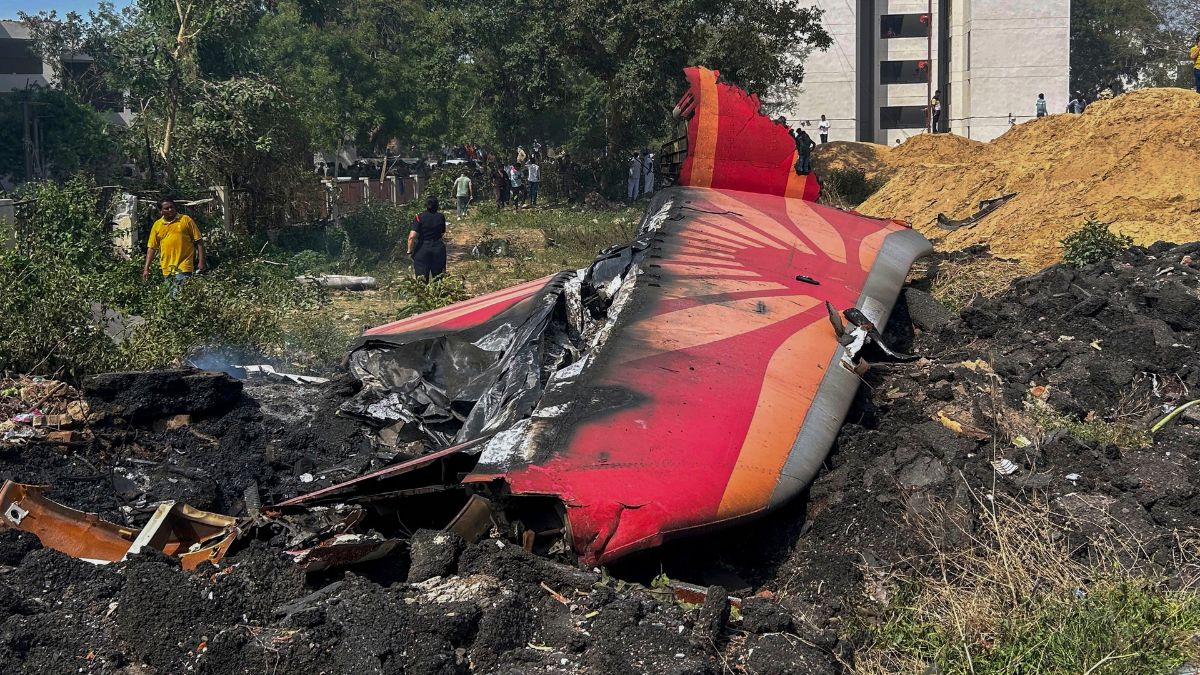Engine fuel control switches are at the centre of the investigation into last month’s Air India plane crash that killed 260 people, according to the preliminary report released on Saturday.
The report found that just seconds after takeoff, the fuel control switches on the Boeing 787’s engines were turned off for a short time, cutting off the fuel supply.
As per the initial findings shared by the Aircraft Accident Investigation Bureau (AAIB) on July 12, one of the pilots is heard on the cockpit voice recorder asking the other, “Why did you cut off the fuel?” The second pilot responded by saying he did not.
These switches, though small in size, are crucial for managing the aircraft’s engines. Even an unintentional movement can lead to major problems.
In this explainer, we look at what fuel control switches do, why they are important and what the investigation says about how they may have affected the flight.
Let’s find out:
What are fuel switches?
Fuel switches control the flow of fuel into an aircraft’s engines.
Pilots use them to start or stop the engines while on the ground, or to manually cut off or restart them if there is an engine issue during flight.
According to aviation experts, it is unlikely that a pilot could move these switches by mistake, reports said.
Each switch is protected by brackets on either side and fitted with a stop lock. This means the switch must be lifted before it can be moved between its two settings: RUN and CUTOFF.
If a switch is moved, it would immediately cut off fuel to the engine, causing it to lose power.
US aviation safety expert John Cox told Reuters that these switches and the valves they control are powered and wired separately. This system ensures that if a switch is used, it directly affects only the engine it is linked to.
Impact Shorts
More ShortsA pilot would need to use these switches during flight only if an engine failed or was damaged badly enough that stopping its fuel supply became necessary for safety, The Indian Express reported.
Where are the fuel switches located?
In a Boeing 787 Dreamliner, the fuel switches are placed just beneath the engine thrust levers on the cockpit’s centre console.
Air India’s Dreamliners, which are powered by GE engines, have two such switches, one for each engine.
The switches are spring-loaded so they stay in place. They operate in two modes: RUN and CUTOFF.
To shift a switch from RUN to CUTOFF, a pilot must first lift it and then move it. This added step helps prevent it from being moved by accident.
What happens when fuel cutoff switches flip from run to cutoff?
Soon after takeoff, both fuel switches were found to have flipped from run to cutoff within a second of each other. The preliminary report does not explain how this could have happened while the plane was in the air.
The report said that if the switches are moved from cutoff to run during flight, each engine’s system begins an automatic restart, reintroducing fuel and ignition to recover thrust.
Aviation experts have said that it is highly unlikely for a pilot to move these switches by accident, Reuters reported.
“If they were moved because of a pilot, why?” US aviation safety expert Anthony Brickhouse told the news agency.
According to US aviation expert John Nance, the switches flipped one after the other, a second apart, about the time needed to move one and then the other. He added that a pilot would almost never switch them off during the early climb.
Flipping the switches to cutoff causes the engines to shut down almost immediately. This action is typically taken after landing when the aircraft has reached its gate or in emergencies like an engine fire. The report does not mention any such emergency during the flight.
At the crash site, both switches were found in the run position. The report also mentioned signs that the engines had restarted shortly before the aircraft hit the ground.
‘Why did you cut off fuel?’
Switching the fuel cutoff to ‘cut-off’ is normally done only after the plane has landed.
The cockpit voice recorder captured one pilot asking the other, “Why did you cut off?”, to which the reply was a denial.
The recording does not clearly show who said what. At the time, the co-pilot was in control of the aircraft, while the captain was monitoring.
Investigators pointed out that the switches are fitted with lever-locks to prevent unintentional use. These must be pulled up before being moved.
A Canada-based air accident investigator told BBC, “It would be almost impossible to pull both switches with a single movement of one hand, and this makes accidental deployment unlikely.”
The Air India flight that crashed on June 12 in Ahmedabad was a Boeing 787-8 Dreamliner.
The accident killed at least 260 people, including 19 people on the ground. Just one passenger survived, making it one of the worst air disasters in India’s history.
With inputs from agencies
)